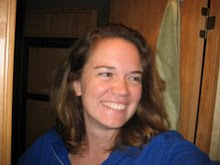Example: For regular verbs, add –ed to the end to make them past tense. This –ed has 3 different sounds depending upon the last sound of the verb. It can sound like a
Monday, December 17, 2012
Teaching teachers
In the afternoons (and sometimes Tuesday and Friday mornings) I have classes with some of the staff of HOM and the teachers from school. These are some very fun classes. I had no real idea where or how to start so I figured from the beginning (as if I know where that is). I’ve been trying to remember my first French classes and learning some Spanish—start with greetings and introductions and go from there. Of course where to go from there is the big question. But it seems to be that was a good place to start. I was trying to get a feel for where they were in their English and of course they come all over the scale. The teachers are at the beginning so we are doing lots of vocabulary…using the questions of what you like to do, what will you do this weekend and then what did you do last weekend which led into past tense verbs and all their complexities. English is really an impossible language…
Example: For regular verbs, add –ed to the end to make them past tense. This –ed has 3 different sounds depending upon the last sound of the verb. It can sound like a, a , or a as after enjoy, wish, and need. Listen carefully when you add the –ed. Also for pronunciation the th is somewhat specialized in English—it is not found in French, Creole, Chichewa…taught and thought sound a lot alike. But they are fun classes with lots of laughter and smiles and questions. I will ask a question and then we go around the table…answer the question and then they have to ask the next person…as much talking as I can get them to do…
Example: For regular verbs, add –ed to the end to make them past tense. This –ed has 3 different sounds depending upon the last sound of the verb. It can sound like a
Subscribe to:
Post Comments (Atom)


No comments:
Post a Comment